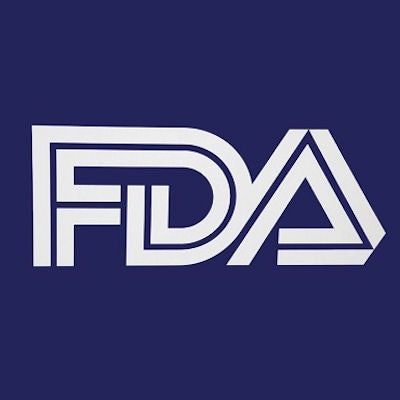
The U.S. Food and Drug Administration (FDA) has released new draft guidance documents for medical software and clinical decision-support (CDS) software in response to regulatory changes mandated by the 21st Century Cures Act.
Enacted in December 2016, the Cures Act included provisions that amended the Federal Food, Drug, and Cosmetic (FD&C) Act to remove certain software functions from the definition of a medical device -- therefore, exempting those applications from FDA regulation. The FDA's draft guidance for medical software reflects the agency's current thinking on the impact of these changes and notably includes plans for less oversight of imaging-related mobile apps.
The draft guidance for CDS also offers insight into the FDA's intentions for regulating CDS in light of the legislative change.
Medical software
In the draft guidance for medical software, software functions that meet the FDA's definitions of medical device data systems (MDDS), medical image storage devices, and medical image communication devices are now not considered devices, the agency said.
"As such, products that are solely intended to transfer, store, convert formats, and display medical device data and results, including medical images, waveforms, signals, or other clinical information are not devices and, thus, are not subject to FDA regulatory requirements," the FDA wrote. "However, software functions that analyze or interpret medical device data in addition to transferring, storing, converting formats, or displaying clinical laboratory test or other device data and results remain subject to FDA's regulatory oversight."
This change will likely not have too much of a practical impact, as the FDA decided in 2015 that it would no longer enforce compliance with regulatory controls that apply to MDDS devices, medical image storage devices, and medical image communication devices.
The FDA also noted that its current guidance document for premarket notification submissions for medical image management devices will be withdrawn, as some software functions described in that guidance no longer meet the definition of a device.
"For the limited subset of medical image management devices that continue to meet the definition of a device and continue to require a 510(k) submission, the information provided in that document, which was written in 2000, is out-of-date," the FDA wrote. "[The Centers for Devices and Radiological Health] encourages manufacturers to reference the most recent FDA-recognized versions of relevant voluntary consensus standards instead."
Mobile apps changes
The draft guidance also included a proposed update to the FDA's Mobile Medical Apps guidance. The FDA will now consider a mobile app that displays medical images directly from a PACS to be an example of an app it would now exercise enforcement discretion. Previously, these types of apps -- and other examples of apps that display patient-specific medical device data -- were considered to be among the categories of apps that were the focus of the FDA's regulatory oversight.
Furthermore, the FDA will now consider mobile apps that are not intended for diagnostic image review to be an example of mobile apps that are not medical devices, the agency noted. These would include apps that provide image display for multidisciplinary patient management meetings or patient consultation -- and include a persistent, on-screen notice, such as "for informational purposes only and not intended for diagnostic use," the FDA said.
The proposed changes to the FDA's medical software policies can be found on the agency's website.
CDS
In its draft guidance for clinical decision-support software, the FDA aimed to provide clarity on the scope of its regulatory oversight of CDS software intended for professionals, as well as patient decision-support software directed at patients and caregivers who aren't healthcare professionals.
The FDA noted that the Cures Act amended the FD&C Act to exclude software functions from the definition of a medical device, providing they met four criteria:
- Not intended to acquire, process, or analyze medical images or a signal from an in vitro diagnostic device or a pattern or signal from a signal acquisition system
- Intended for the purpose of displaying, analyzing, or printing medical information about a patient or other medical information (such as peer-reviewed clinical studies and clinical practice guidelines)
- Intended for the purpose of supporting or providing recommendations to a healthcare professional about prevention, diagnosis, or treatment of a disease or condition
- Intended for the purpose of enabling such healthcare professional to independently review the basis for such recommendations that such software presents so that it is not the intent that such healthcare professional rely primarily on any of such recommendations to make a clinical diagnosis or treatment decision regarding an individual patient
Consequently, the FDA offered a number of examples of CDS software that would not be considered a medical device, including the following:
- Software that suggests an intervention or test, consistent with clinical guidelines and/or drug labeling, based on or in response to a physician's order, such as software suggesting that a healthcare professional order liver function tests before starting a statin
- Software that uses rule-based tools that compare patient-specific signs, symptoms, or results with available practice guidelines (institutions- or academic/clinical society-based) to recommend condition-specific diagnostic tests, investigations, or therapy
- Software that presents and prioritizes alternatives to orders, drugs, or therapies using practice guidelines and other generally accepted practices, such as rule-based tools allowing healthcare professionals to efficiently select diagnostic tests, drugs, devices, or therapies in accordance with their approved or cleared labels
As a result, CDS software used during ordering of imaging studies would appear to not fall under the definition of a medical device.
However, software functions that are intended to acquire, process, or analyze a medical image, a signal from an in vitro diagnostic device, or a pattern from a signal acquisition system would still be considered as medical devices and subject to FDA review, according to the guidance. A number of imaging-related examples were included on the FDA's list of CDS or other software functions that it intends to focus its regulatory oversight on, including the following:
- Software that uses a patient's image sets (e.g., CT or MRI) to create an individual treatment plan for patients undergoing radiation therapy treatment with external beam or brachytherapy, and the healthcare professional is intended to rely primarily on the treatment recommendations in determining the radiation therapy plan for the individual patient
- Software that manipulates or analyzes images and other data obtained from a radiological device (e.g., CT, bone density, and distance) to create 3D models of the region intended to be used in planning orthopedic/dental surgical treatments with a device
- Software that manipulates or interpolates data from a patient's CT scan, providing 3D reconstruction for visualization of the interior of the bronchial tree to aid in the placement of catheters in lung tissue and placement of markers into soft lung tissue to guide radiosurgery and thoracic surgery; the surgeon relies primarily on the recommendations to make decisions about the placement of catheters and markers during surgery
- Software that customizes the patient-specific surgical plan and instrumentation based on analysis of imaging and device characteristics for orthopedic or dental implant procedures
- Software that calculates the fractal dimension of a lesion and surrounding skin image and builds a structural map to provide diagnosis or identify whether the lesion is malignant or benign
- Software that analyzes CT images to compute and/or approximate fractional flow reserve; in this case, the software performs and provides the user an image analysis that the user could not independently derive
- Software that is intended to perform image analysis for diagnostically differentiating between ischemic and hemorrhagic stroke
The draft guidance for CDS can be found here.




















